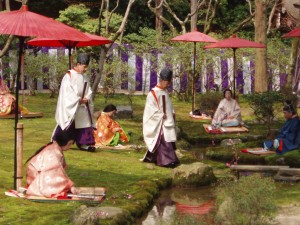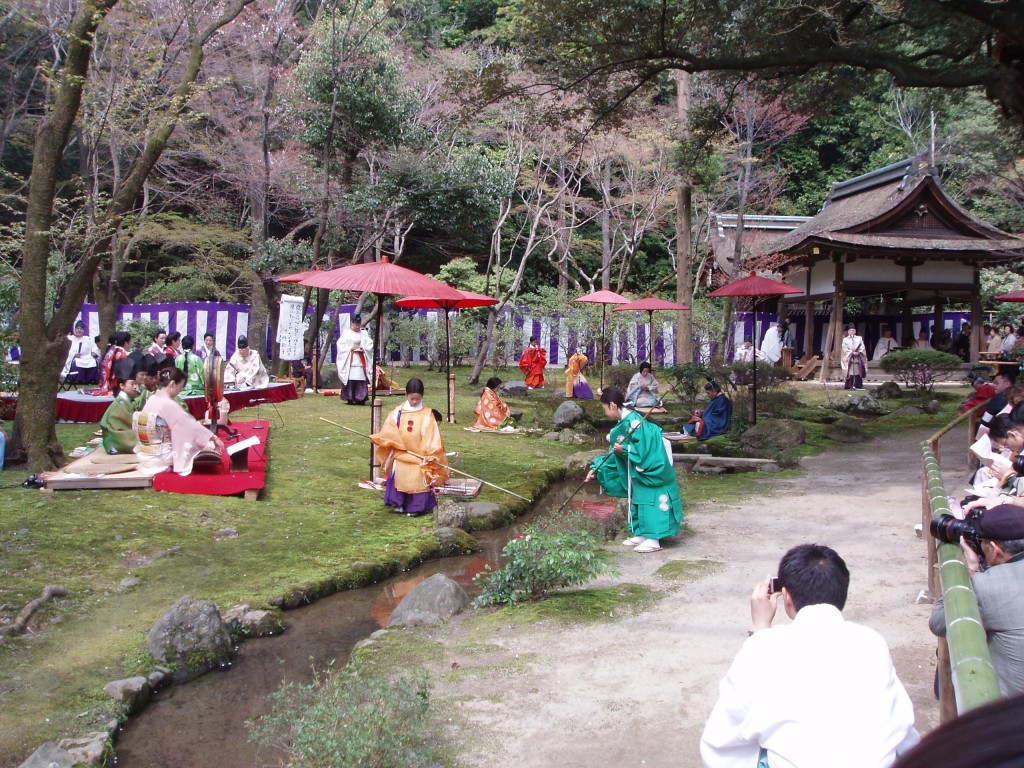In the wonderful preface to Kokinshu (the finest defence of poetry I’ve ever come across), Ki no Tsurayuki writes as follows:
“Japanese poetry has the human heart as seed and myriads of words as leaves. It comes into being when we use the seen and the heard to give voice to feeling aroused by the innumerable events in their lives… It is song that moves heaven and earth without effort, stirs emotions in the invisible spirits and gods, brings harmony to the relations between men and women, and calms the heart of fierce warriors.”

Poetry contest at Kamigamo Shrine
It’s a wonderful depiction of the power of poetry, and he goes on to trace the roots back to the age of gods.
“Its origin goes back to the origins of heaven and nearth, but its transmission to our time with regards to sunbright heaven began with the work of Shitateru hime and with regards to the earth, mother of metals, with the work of Susanoo no Mikoto.”
This set me to looking up the references to the two figures in Kojiki. Shitateru hime (literally Princess Shining Under) is an earthly kami, daughter of Okuninushi, and also known as Takahime no Mikoto. When her husband died, she composed a poem at his funeral.
Susanoo composed a poem on his marriage to Kushinadahime, the beautiful princess he rescued from the eight-headed monster he slew.
In this way, it seems the two kami were the first to compose poetry, according to the mythology. The divine origin is in accord with Tsurayuki’s notion that poetry resonates in accord with heaven and earth, promoting harmony between the two. Indeed the whole of creation resonates in harmony with the ‘mingled music of Nature’.
Poetry indeed!

The Heian-era poetry contest where participants write verses before a saké cup floats past them

There is, or was, such a poetry event held north of here in Hiraizumi. Where was this photo taken?
Hello there. Yes, I noticed when I visited Hiraizumi a couple of years ago that they also hold a similar event along the windy river in the large garden there. The photo here was taken at Kamigamo Jinja in Kyoto. Jonan-gu in the south of the city also hosts a Heian-style poetry contest.